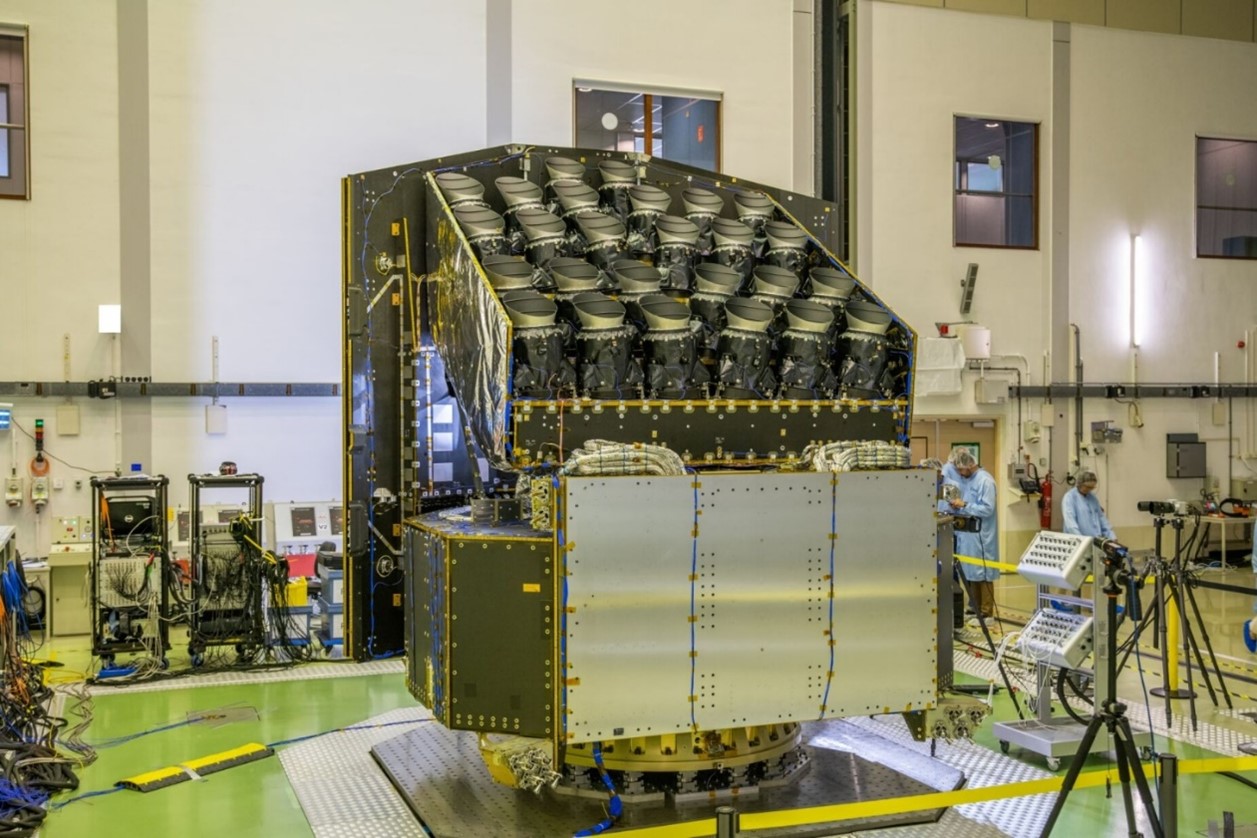PLATO Spacecraft CDR - PLATO
Plato, ESA’s planet hunter, advances to next stage
Plato, ESA’s next-generation planet hunting mission, has passed its spacecraft critical design review on 5 March 2024, achieving the completion of a major phase in the progress of the project. The review confirmed that the proposed detailed spacecraft design and predicted performance meet the requirements for all mission phases. The review also corroborated the overall verification and validation programme and the robustness and credibility of the project schedule.
The critical design review of the Plato spacecraft addressed the elements under responsibility of the PLATO Prime contractor, OHB System AG, with Thales Alenia Space in France and Beyond Gravity in Switzerland as part of the core team. These elements are the service module, which carries the systems necessary to operate the spacecraft, and the empty optical bench assembly, which is built on top of the service module. The Prime contractor is also responsible for the whole integration of the spacecraft, which includes mounting the 26 Plato cameras on the optical bench, and for the spacecraft testing and validation both on the ground and in-orbit.
The Plato spacecraft is a 3-axis stabilised system with a launch mass of approximately 2500 kg, including consumables. It is about 3.5 m wide and 3.7 m high, with a sunshield that spans approximately 9 m. The scientific payload is based on a multitelescope configuration consisting of 24 “normal” cameras and 2 “fast” cameras with CCD based focal planes. To optimise the observations for bright Sun-like stars, the normal cameras are divided into 4 groups, each with a slight offset in their direction of sight, which allows for a large light-collecting area and at the same time a wide field of view on the sky.
The provision of the Plato payload is the responsibility of the European Space Agency in collaboration with a European consortium of institutes and industry, the Plato Mission Consortium (PMC) in accordance with the established Multi-Lateral Agreement (MLA) with the Agency.
“The successful Critical Design Review is the outcome of the efforts all the teams in industry, PMC, and ESA put in on a daily basis. The collaborative spirit and dedication of all the participating parties bring us another step closer to our launch planned end of 2026 and to a successful mission,” said Thomas Walloschek, project manager of Plato at ESA.

Following its scheduled launch at the end of 2026, Plato is set to journey to the Lagrange point 2, located 1.5 million km beyond Earth in the direction opposite to the Sun. Once positioned at this point, the telescope will survey over 200,000 stars during its four-year nominal operation, looking for regular decreases in the brightness of these stars, which occur when a planet passes in front of them. By analysing these transits and studying the fluctuations in stellar brightness, researchers will be able to accurately determine the characteristics of exoplanets and the stars they orbit.
“This is a great achievement towards the realisation of Plato’s ambitious goals. Plato will search for terrestrial planets up to the habitable zone of stars like the Sun, and will allow us to determine planetary sizes, masses, and ages with unmatched accuracy. Plato’s high-quality light curves will also be key to measuring the oscillations of the stars and gaining fundamentally new insights into their structure and evolution,” said Ana Heras, project scientist of Plato at ESA.
The next major milestone for Plato is the mission critical design review in 2025.
Notes for editors
Plato, or PLAnetary Transits and Oscillations of stars, is the third medium-class mission in ESA's Cosmic Vision programme. Its objective is to find and study a large number of extrasolar planetary systems, with emphasis on the properties of terrestrial planets in the habitable zone around solar-like stars. Plato has also been designed to investigate seismic activity in stars, enabling the precise characterisation of the planet host star, including its age.
For further information, please contact:
Thomas Walloschek
ESA PLATO project manager
Email: Thomas.Walloschek @ esa.int
Ana M. Heras
ESA PLATO project scientist
Email: Ana.Heras @ esa.int
- Removed a total of (2) style text-align:center;








































 Sign in
Sign in
 Science & Technology
Science & Technology